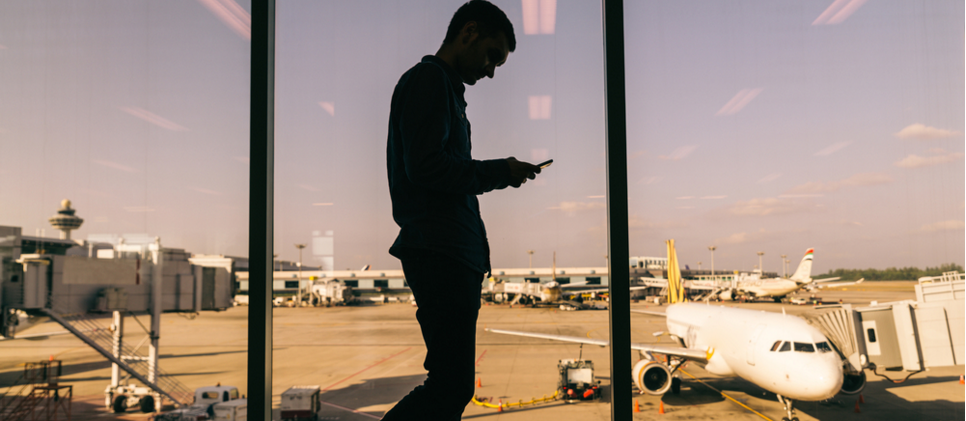2015 was a positive year for the travel industry, displaying an almost 5% increase in global travel despite turbulence in many areas of the world. There was an obvious shift towards self-service, mobile search and brand authenticity. These are positive trends to build upon, and the smart travel business owner will make sure to have his booking services and customer interfaces up-to-date and evolving in this competitive market. Furthermore, an astute look forward at some of the more likely predictions for 2016 can help travel businesses plan best where to invest their resources for marketing this coming year. Here are some trending predictions and recommendations for 2016.
Trend #1
Traffic will transition from the more solid organic-driven (currently at 50%) to a more diversified multi-channel approach.
According to a BrightEdge report, approximately 50% of the website traffic relating to hospitality sites comes from organic search. However, an IngnitionOne report shows that paid traffic brings travelers with a larger average order value. Social media platforms are also becoming prime areas for spreading brand awareness, creating loyalty, and building customer relationships. Reports show an estimated $8.3 billion is being spent in 2015 on social media advertising.
Everything points to the fact that website visitors are being driven by multi-channel traffic stimulation. What businesses need to focus on is creating solid marketing campaigns that engage their audience on multiple fronts and through as many channels as possible, delivering fun, intriguing, and useful content that drives sales.
Trend #2
The travel industry can expect to see an increasing growth in mobile users, further strengthening the need for travel businesses to have mobile responsive sites and apps.
Mobile phones are being used by over 65% of the world, and it is expected to increase to nearly 70% by 2017.
According to hotel statistics, almost 50% of visitors are booking from mobile devices, and that number is climbing. To cater to this growing demographic, travel businesses need to hearken to the call for mobile responsive sites. The bounce rate for unresponsive sites is close to 80%, indicating that web surfers are not interested in booking through a site with a less than optimal user experience.
Additionally, developers are publishing helpful apps, such as those offering location-specific services to direct travelers to the best currency exchange station or nearby restaurants, and others that inform them of how long it will take to reach their flight gate. Mobile payment options, like Google Wallet and ApplePay’s Passbook, for instance, offer scanable purchasing capabilities, which business owners can leverage by providing mobile-centric deals that cater to the mobile ecosystem. Travel businesses should invest their marketing time and budget in optimizing their sites and user interfaces to cater to the rising mobile audience. Make sure images, text and other elements load clearly, size properly and sync adequately with multiple mobile devices that are being used to access them.
Trend #3
An increase in bookings made via booking engines, rather than over the phone or through live travel agents.
The need to eliminate any waiting time and minimize human interaction has bred a new category of travelers, the DIYers. As mentioned, self-service is a big trend in travel, introducing everything from self-check in at hotels and airports to self-guided tours. Booking through an online booking engine rather than speaking to an actual travel agent or booking directly with the supplier is just one more step in movement towards self-service traveling, and this is apparent in the numbers. More than 57% of bookings are being made online each year. Traditional travel agents and operators will need to reinvent themselves and their services in order to stay in business and thrive in the years to come, as we mentioned in a previous blog post.
In addition, OTA’s offer more personalized deals and recommendations and display positive reviews and social proofs, making the entire experience more tailored to the individual traveler. Our advice to business owners is to utilize advancing technology to deliver the most individualized and self-sufficient service possible. Incorporating social proofs, such as friends who like your service, testimonials and significant accolades, to your site engenders a sense of trust in customers. Additionally, because lead behavior technology delivers so much information to the adept marketer, you can personalize the ad campaigns or offers being viewed or sent to potential customers. If you know, for example, that a lead is looking into beach getaways, send a tailored offer for one of your luxurious island vacation homes.
Takeaways
Travel business owners should carefully plan their digital marketing efforts by taking the following points into consideration:
- Have a fully responsive site to cater to the growing mobile audience.
- Social media dictates behavior more frequently than ever before. Business owners would do well to work on building a solid community within the social media framework, utilizing their social profiles as a secondary website for their businesses. Go even farther and place booking capabilities into social media pages, as this can increase reservations.
- Increase exposure by registering with reputable booking engines and listing sites, such as TripAdvisor and Airbnb.
2016 promises to be an exciting year for the travel industry, and the contemporary travel business owner will do well to maximize on the current trends and coming projections that are in store for the coming year.





